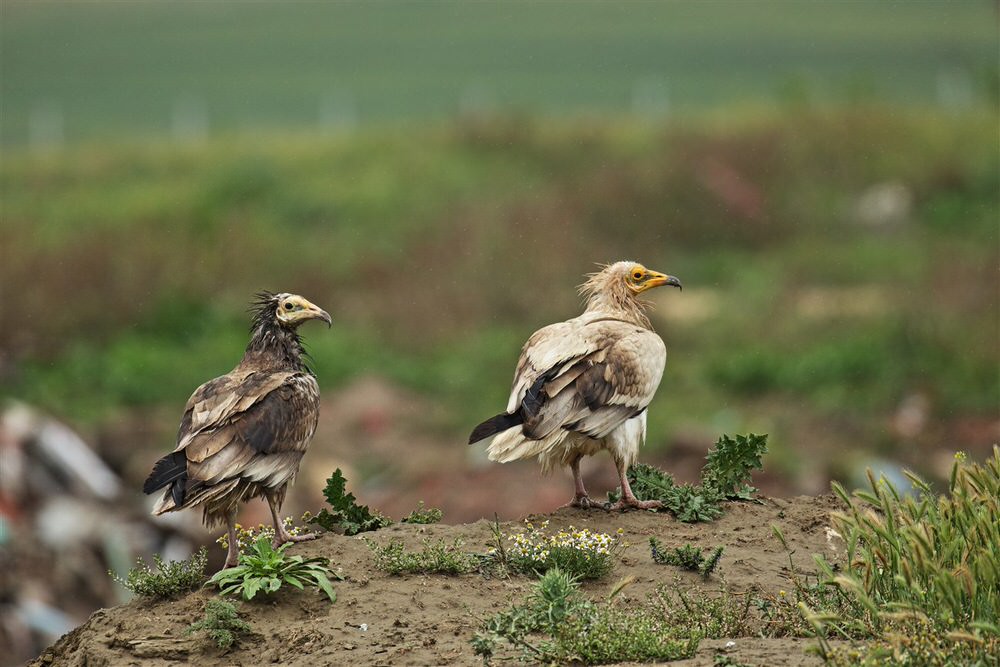Afghanistan – Armenia – Azerbaijan – Bahrain – Cyprus – Egypt – Georgia – Iran – Iraq – Israel – Jordan – Kazakhstan – Kuwait – Kyrgyzstan – Lebanon – Oman – Qatar – Saudi Arabia – South West Russia – Syria – Tajikistan – Türkiye – Turkmenistan – United Arab Emirates – Uzbekistan – Yemen

Capital: Ankara
Area: 783,562 km2
BirdLife International partner: Doğa Derneği
Total number of bird species: 494
Globally threatened bird species: 28
Country endemics: 0
Important bird and biodiversity areas: 184 IBAs with a total area of 120,958 km2
Rare birds committee: Turkish Rare Birds Committee (TRBC)
Specialities:
White-headed Duck, Caucasian Grouse, Dalmatian Pelican, Northern Bald Ibis, Lammergeier, Egyptian, Eurasian Griffon and Cinereous Vultures, Steppe Eagle, Eastern Imperial Eagle, Great Bustard, Macqueen’s Bustard, Sociable Lapwing, Cream-coloured Courser, Armenian Gull, European Turtle Dove, Pallid Scops Owl, Brown Fish Owl, Sooty Falcon, Saker Falcon, Mountain Chiffchaff, Iraq Babbler, Krüper’s Nuthatch.
Ornithological interest:
In the OSME region, Turkey’s birds are comparatively well studied and distributions are relatively well known. Located at the junction of the continents of Asia, Africa and Europe, Turkey hosts a wide range of species. Twenty-six bird species occurring in Turkey are globally threatened and these include the critically-endangered Sociable Lapwing and endangered Northern Bald Ibis, Egyptian Vulture, White-headed Duck, Steppe Eagle and Saker Falcon. Among these, Turkey holds globally-significant populations of Egyptian Vultures and White-headed Ducks. For example, up to 25% of the global population of Egyptian Vultures may be breeding in Anatolia and the central Anatolian steppes have recently been identified as a breeding area for Steppe Eagles. There are also important breeding populations of Great Bustards, Eastern Imperial Eagles and Dalmatian Pelicans. Soaring birds and other migratory species pass through Turkey which sits on the East African-Eurasian Flyway while the Marmara Sea (including the Bosporus and Dardanelles) is a globally-important migratory bottleneck for Yelkouan Shearwaters.
With some planning of target areas and timings, most of the Turkish specialities can be seen relatively easily. The excellent books, Birds of Turkey by Guy Kirwan and colleagues, and Birds of Turkey (in Turkish) published by the TRAKUS, are musts to help find the specialty species. A visit to the Caucasus Mountains in the west is key to locating Mountain Chiffchaff and Caucasian Grouse. In the Köroğlu Mountains and elsewhere to the north of Ankara, one can see four species of vulture and at least three eagle species at the same time, and Krüper’s Nuthatch is common in old coniferous forests. One can witness the spectacle of migratory soaring birds during autumn in the Eastern Mediterranean, especially in the Adana-Sarımazı region.
Best times to visit:
Birdwatching in Turkey can be productive at any time of the year. May and June are arguably the best months to visit for many of the specialities, as well as breeding birds. Autumn migration from late August to October can be spectacular at the various migration bottlenecks.
Essential reading:
Svensson L, Mullarney K, Zetterström D, Grant P (2010) Collins Bird Guide, HarperCollins, UK.
Kirwan G, Boyla K, Castell P, Demirci B, Özen M, Welch H & Marlow T (2008) The Birds of Turkey, A&C Black.
Yavuz N, Yavuz K & Karataş A (2021) ‘Türkiye’nin Küresel Ölçekte Soyu Tehlike Altındaki Kuş Türleri’, Doğanın Sesi 7: 19-39 (in Turkish).
Trip report links:
Compilers:
Şafak Arslan, Serdar Özuslu, Dicle Tuba Kılıç and Güven Eken
